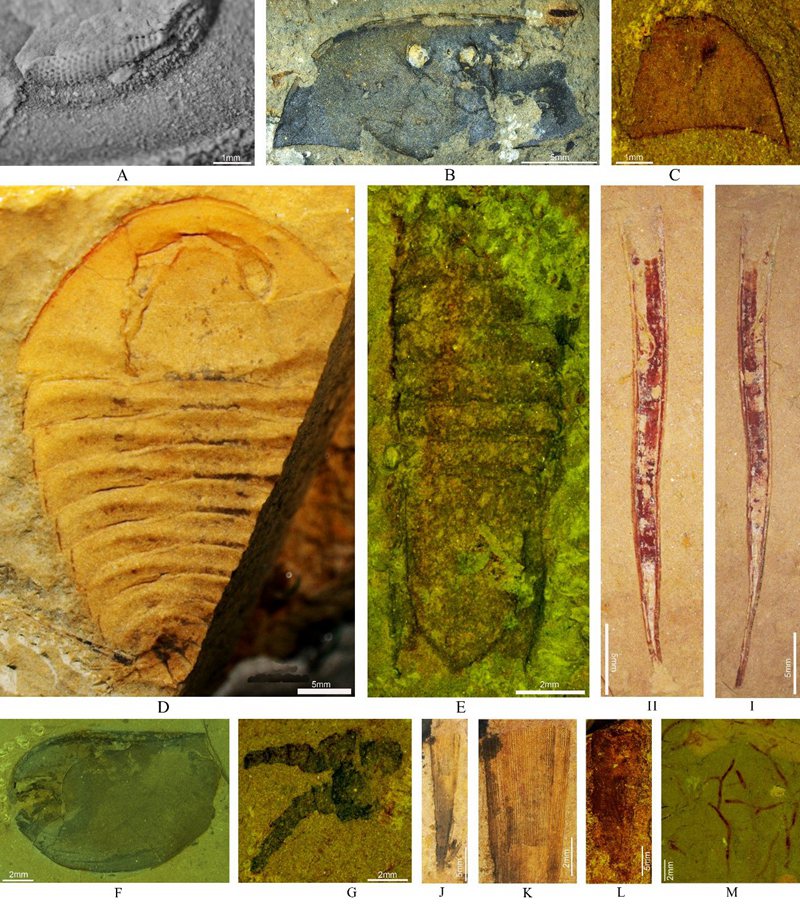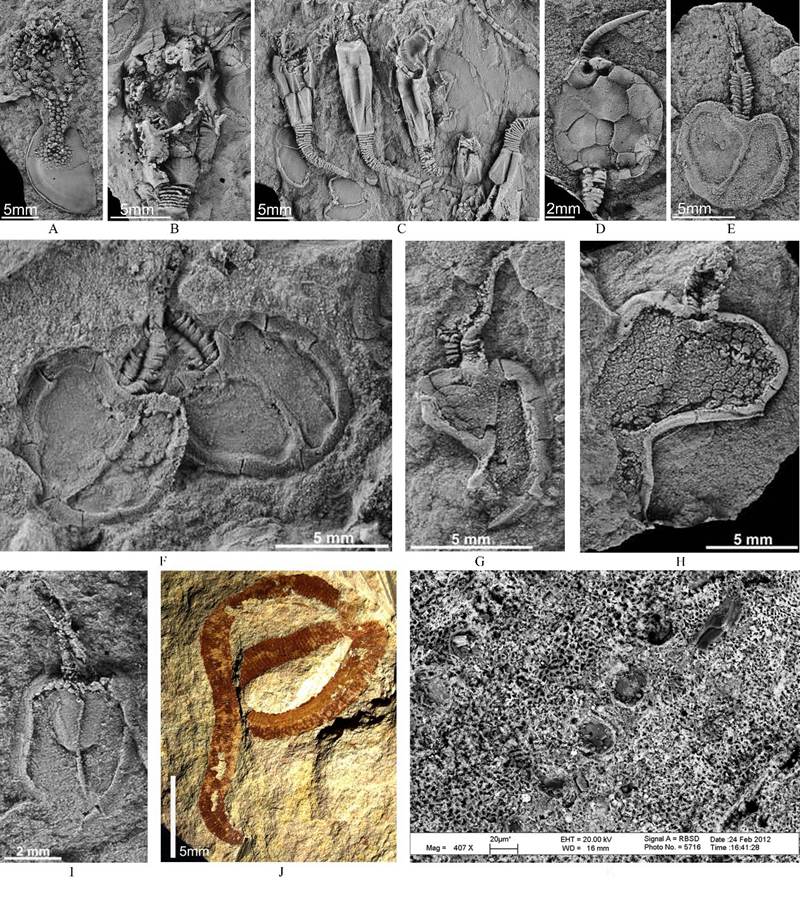Burgess Shale-type biotas are critically important in understanding the early evolution of the Metazoa. The well-known Cambrian Burgess Shale-type biotas, such as the Burgess Shale, Chengjiang, Sirius Passet, Emu Bay Shale, and Kaili, are all restricted to the early and middle Cambrian time interval and have not been found in strata younger than the Guzhangian.
A new exceptionally preserved biota, the Guole Biota, was discovered recently from the late Cambrian (Furongian) Sandu Formation near Guole Town, Jingxi County, Guangxi Zhuang Autonomous Region, South China, by Dr. ZHU Xuejian from from Nanjing Institute of Geology and Palaeontology, Chinese Academy of Sciences and his colleagues. It is the first report of a diversified Burgess Shale-type biota from the late Cambrian. This new Burgess Shale-type assemblage fills a temporal gap between the middle Cambrian and Lower Ordovician stratigraphic record of Burgess Shall-type Lagerstätten and contributes to our understanding of the evolution of early life.
The Guole biota is one of the most diverse and informative Burgess Shale-type biotas found in the Yangzi Plate, South China (e.g., Chengjiang fauna, Kaili fauna, and a series of lower and middle Cambrian soft-bodied biotas). Preliminary investigation has identified more than eight major fossil groups, including arthropods, brachiopods, echinoderms, cnidarians, graptolites, hyolithids, palaeoscolecids, and algae.
Related information: Zhu Xuejian, Peng Shanchi, Samuel Zamora, Bertrand Lefebvre and Chen Guiying, 2016. Furongian (upper Cambrian) Guole Konservat-Lagerstätte from South China.Acta Geologica Sinica(English Edition), 90(1): 30–37.

A, Eyes of trilobite. B, Aglaspella sanduensis Lerosey-Aubril, Ortega-Hernández, and Zhu 2013. C, Glypharthrus? sp. D, Aglaspidid-like arthropod. E, Mollisonia-like arthropod. F, Bivalved-arthropod. G, detached appendages of arthropod. H-I, Sphenothallus? sp. J-K, Hyoliths with exquisitely preserved microstructures of the shell. L, Hyoliths with gut fillings preserved. M, Branching-alga.

A, Cambroblastus guolensis Zhu et al., 2014. B, Four circlets glyptocystitid rhombiferan. C, Association of a new glyptocystitid rhombiferan with three circlets and thecal plates ornamented with ridges and “Phyllocystis” jingxiensis. D, Solutan. E-F, “Phyllocystis” jingxiensis. G-H, Drepanocarpos-like hanusiid. I, Primitive mitrocystitid mitrate. J-K, A new species of palaeoscolecids.
